What Is a Landing Page?
Before we get into the details of this topic, let us first understand what a landing page is.
Landing pages are web pages explicitly designed to encourage visitors to act. This page is usually the link the user will “land” on when they click on a newsletter, ad, social media post, or other marketing channels. For example, this page’s end goal or Call-To-Action (CTA) could be signing up users for a newsletter, downloading an eBook, making a purchase, or requesting a meeting/quote.
Unlike any other page on your website, the landing page’s objective is specific to the user and the campaign it is built for. This means it has a singular focus and is designed to minimize distractions. Given this targeted approach, landing pages are often impactful and help improve conversion rates for any campaign.
Why to Optimize a Landing Page?
A lot has been written about creating better landing pages. You have probably read a lot about landing page optimization tips to create better landing pages that get higher conversion. So why should you read this post after all?
Because it underlines one important aspect, one secret that marketers like you and me forget when crunching numbers – listening to what the customers say. You had converted customers before you optimized for conversion, and you will be losing customers even after optimization. The point is you have been doing a few things right, which has brought the customers in, and the objective is to leverage on the right things more in order to convert more visitors.
In this article, we will explain you how to leverage on the right thing and make informed decision to better optimize your landing pages to accelerate website conversions.
1. Listen to Your Customers
Nobody would know about the positives and negatives of your website/landing page better than your customers. As mentioned, you have to increase the positives and decrease the negatives and to do that, you need to know what they are. The easiest way to know them is by asking your visitors about it.
–
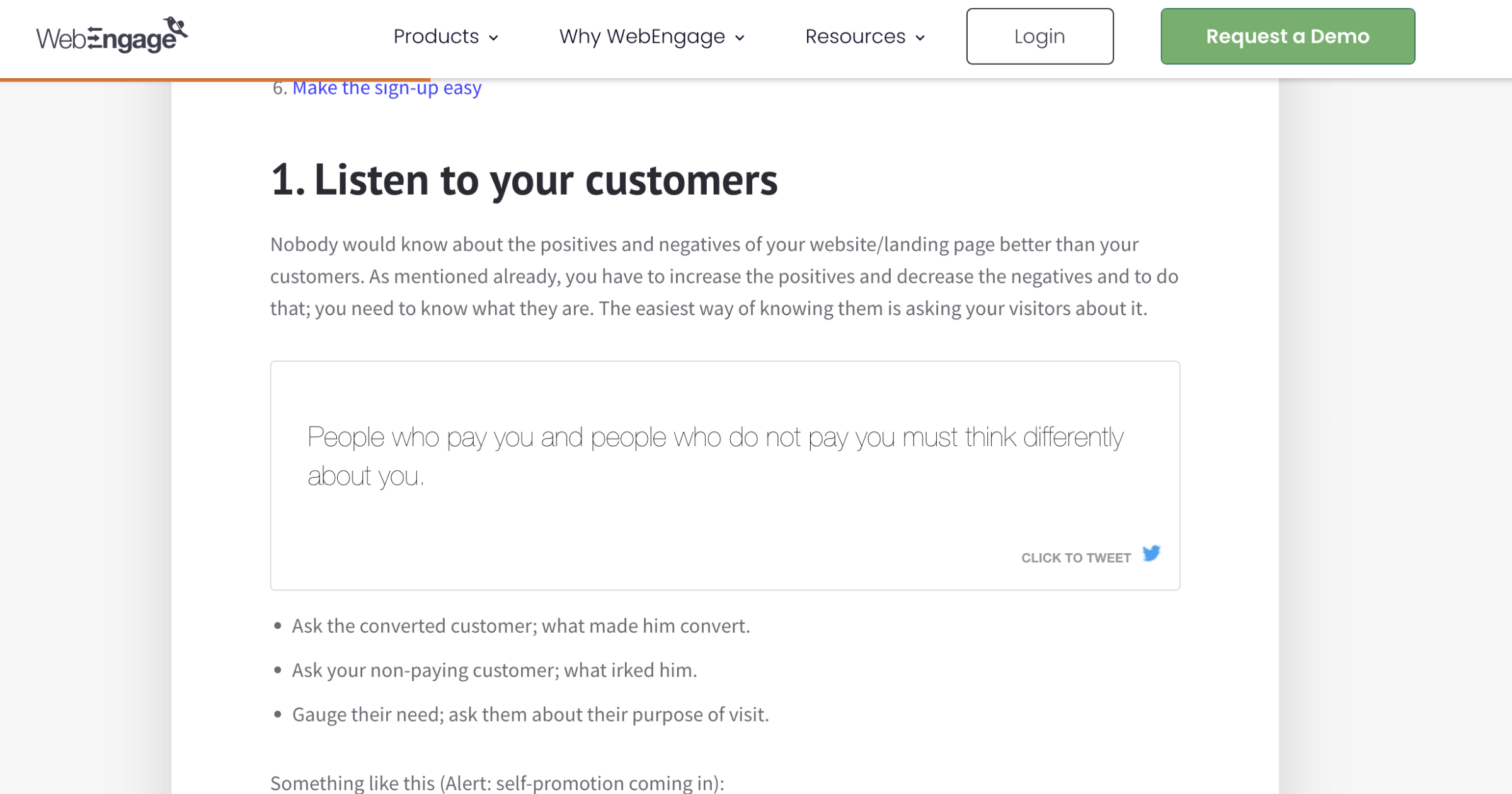
- Ask the converted customer; what made him convert.
- Ask your non-paying customer; what irked him.
- Gauge their need; ask them about their purpose of visit.
Something like this (Alert: self-promotion coming in):
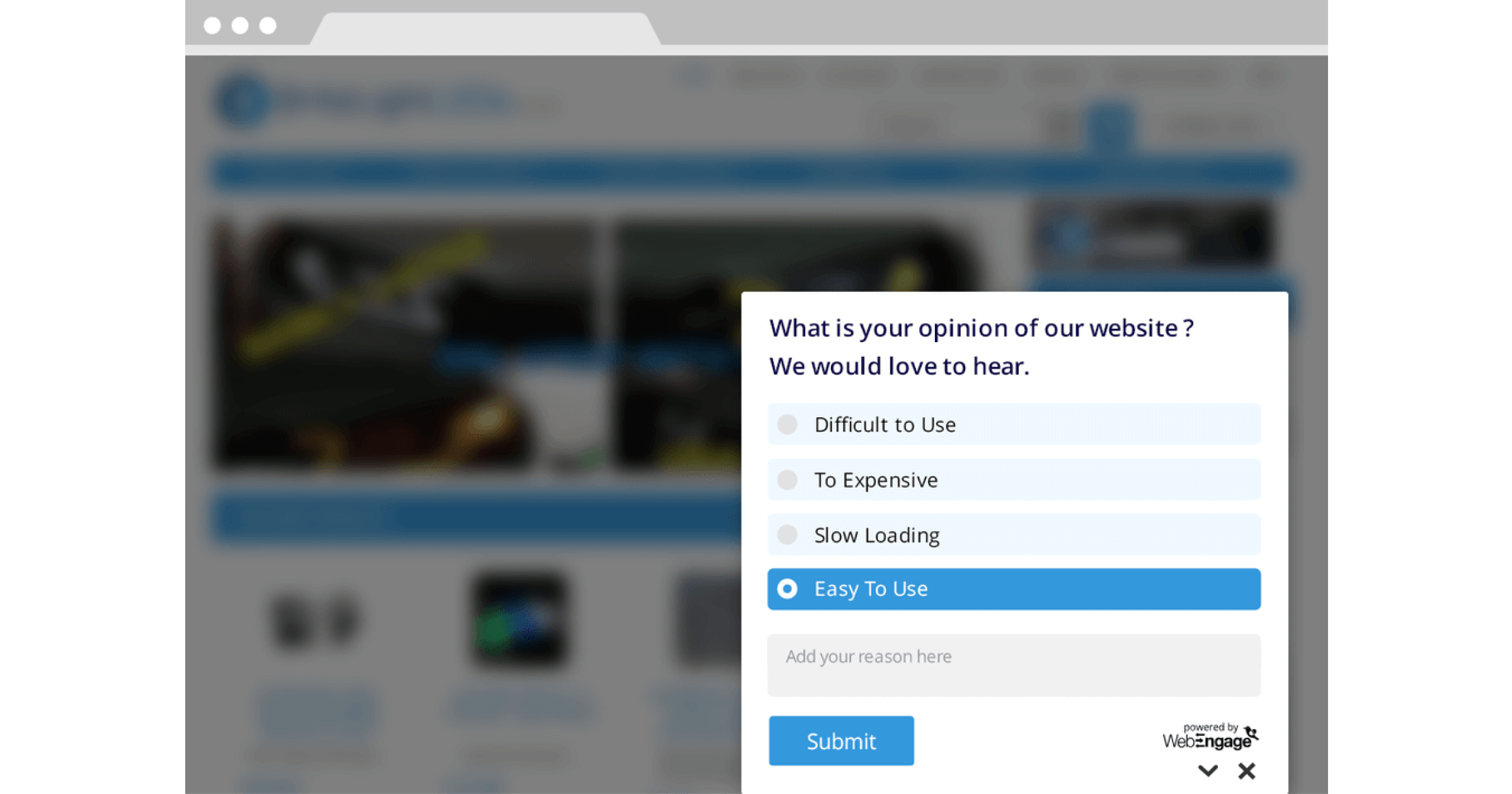
2. Observe Your Customer
There are a few things that you can neither ask your customer, nor he could tell you. They are his responses to the different visual stimuli on your landing page. You can track that with the help of modern tools like:
- A/B Testing: You could play with the headlines of your pages and track the responses and use the better one, simple. Need to know more? See this.
- Multivariate Testing: It isn’t different from A/B testing but allows you to carry out many such tests concurrently. There can be a lot of different landing pages with different combinations of headlines, videos, pictures, and CTAs and you can track all the responses.
- Heat Maps: It allows you to determine which elements on your landing page grab your visitor’s attention, and which elements are being ignored. On the basis of the results, you can highlight the pages required or dumb down the parts which are unnecessary.
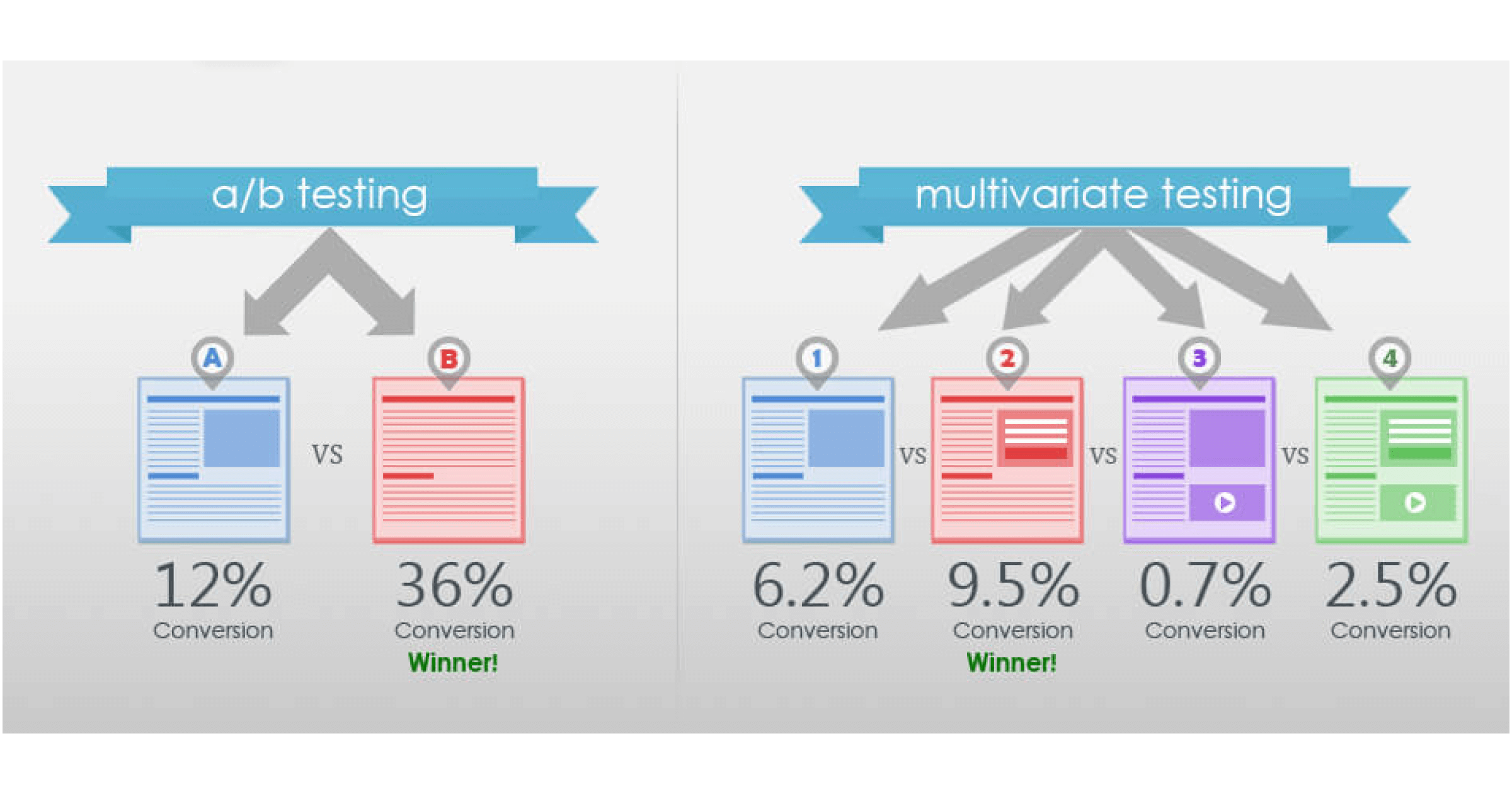
The process is called Implicit Feedback, and a combination of explicit and implicit proves out to be more reliable than one of them used exclusively. Once you have the insights, you have an idea of what your visitors want. Now it is the time to deliver it to them. We have listed down the five most important things to remember while optimizing your landing page for conversion.
3. Simplify Your Landing Page
A cluttered page with too much information or too many CTAs can distract the visitor and reduce the likelihood of them taking the desired action. Keeping the page clean, uncluttered, and focused on a single objective can improve the user experience and increase conversions.
Take the example of this landing page by Wix.

It follows the principles of minimalism, is easy to browse, and provides an impactful CTA in each workflow.
4. Create an Engaging Landing Page
People generally play with the look, feel, and length of the landing page. While we agree all three are important, what’s more important is the combination of the three resulting in an engaging experience for your user. The conversion-rate-experts did an awesome job for Moz.com. It can be long and graphic or short and to the point, but it must be able to explain the most important things the customer gets after buying your product.
A visitor comes to a landing page in search of something. If he has landed on your page, you have been successful in getting his interest, now strive to keep it.
Sue us for self-promotion, but don’t you admire our landing page for lead generation?
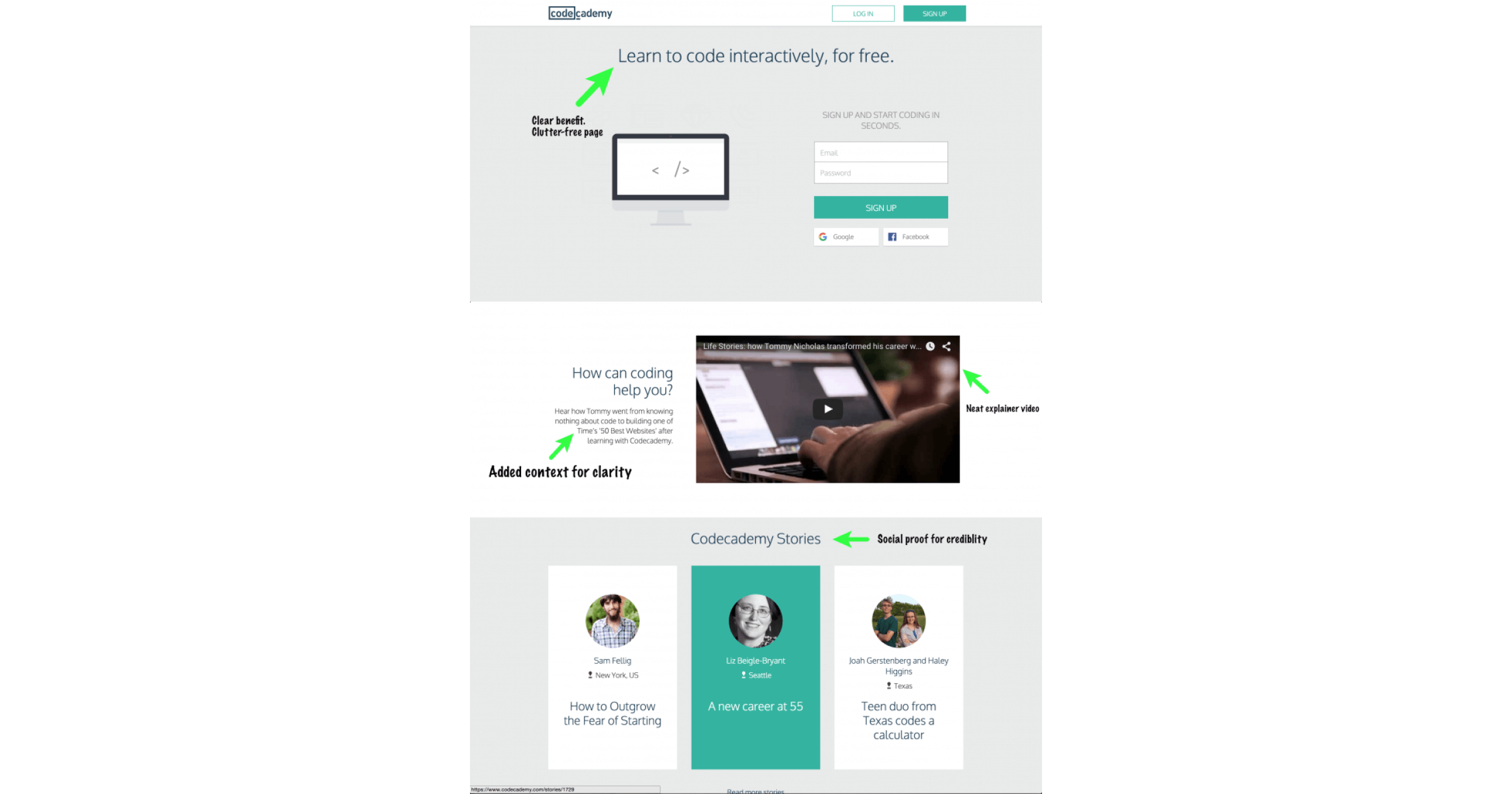
5. Try Different Headlines and Copy
The crucial element of an effective landing page is the headline and copy. The key to creating an impactful headline and copy is to know the purpose and expected outcome of the landing page. Another essential step is continuously testing different variations to help you determine what resonates best with your audience and drives the highest conversion rates. Experiment with different wording, messaging, and CTAs to find the best combination for your landing page.
Why Is My Landing Page Not Converting?
These simple tips will help you create a winning landing page that can help you get high conversions. However, there can be times when despite our best efforts, the landing page may still not convert as we’d hoped.
In this situation, there is a simple checklist that can help zero in on the issues and help us revise the page to meet customer expectations.
- Start by evaluating the messaging of the page to ensure it aligns with the audience’s expectations. Is it ideal for the user? Does it resonate with your target audience?
- Next, understand if the flow of the landing page is ideal for your visitors. For example, if you have a teaser ad and an in-depth email campaign that takes the user to the same landing page, there may be a low conversion since the page is not ideally suited in either situation.
- Evaluate CTAs and understand if they are correctly placed and have a suitable copy.
- Declutter your landing page, if possible, to be simplistic and easy to navigate without distracting CTAs.
- Ensure your page has social proof, like customer testimonials, case studies, or other success stories that help build trust and credibility.
- Evaluate whether the offer on the landing page is enticing enough for your audience. Make changes if necessary.
- Understand if technical issues may deter the visitors from taking the next step. This could be broken links, slow load times, error messages, or the page not being optimized for mobile devices.
This checklist is just the tip of the iceberg to understanding whether your landing page follows the ideal strategy for your marketing goals. There is always scope to optimize landing pages, so constantly look out for and identify issues with your page and rectify them promptly.
Reiterate – Re-evaluate – Recreate!
Finally, landing page optimization is not a one-time fix but a continuous effort. The mantra for success is defined in three simple steps, which is:
- Reiterate your business goals before every new campaign or marketing project
- Reevaluate your metrics to ensure you are on the right path
- Recreate your existing content, channels, pages, and other marketing assets to match your futuristic vision
With this, you can achieve continued success with your website and craft powerful landing pages that convert visitors into customers.































![6 Landing Page Optimization Best Practices [With Examples]](https://assets.webengage.com/wp-content/uploads/2017/01/6-Landing-Page-Optimization-Best-Practices-With-Examples.jpg)


 Harshita Lal
Harshita Lal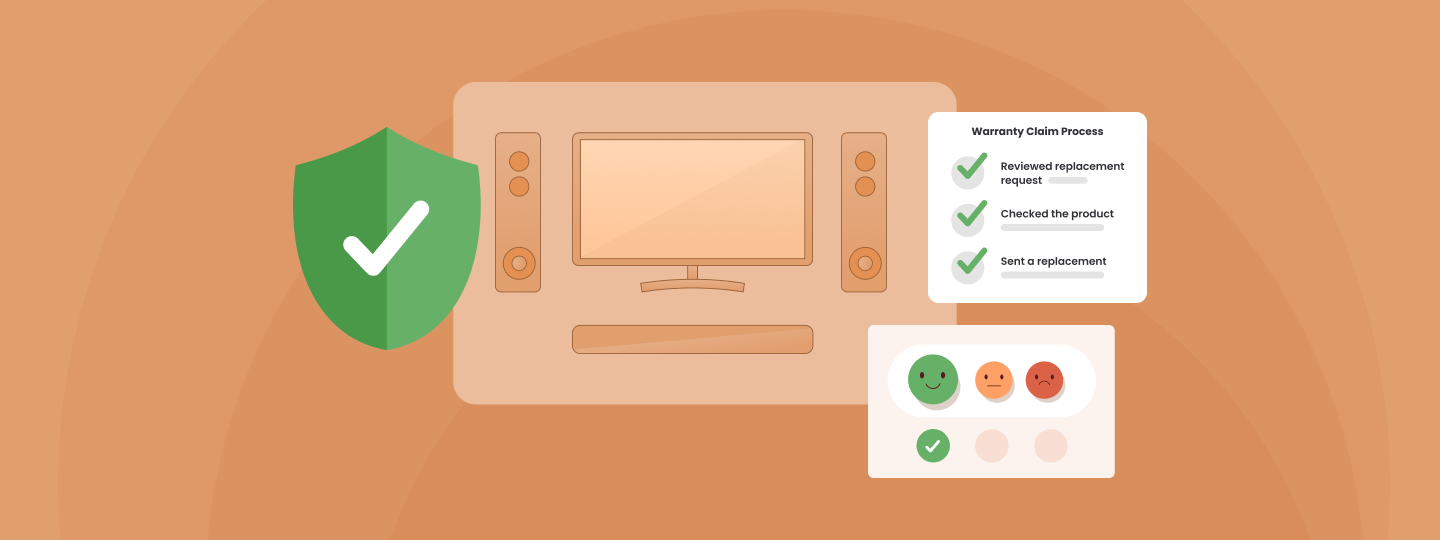
 Diksha Dwivedi
Diksha Dwivedi
 Prakhya Nair
Prakhya Nair